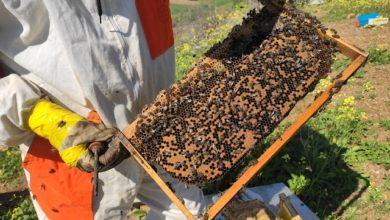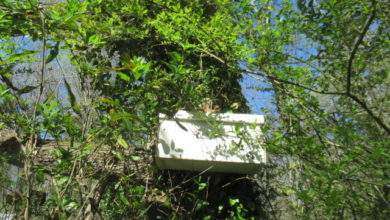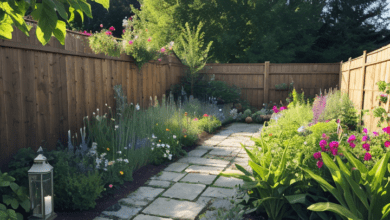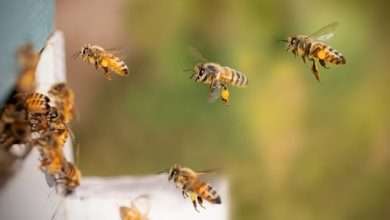Boost Your Bee Colony’s Success: Fall Feeding Strategies
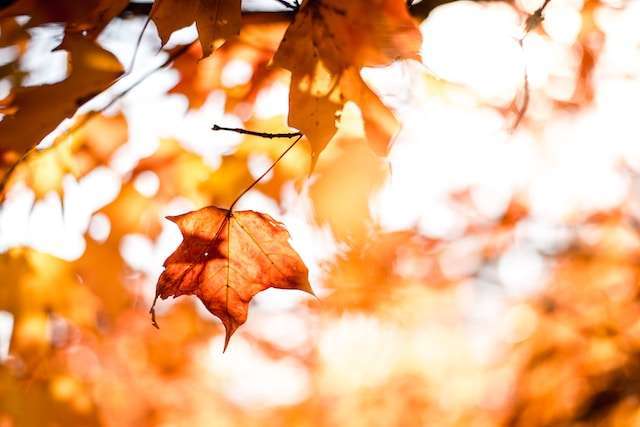
As the seasons change, beekeepers need to adjust their beekeeping strategies if they want to maximize their bee colony’s success. The fall months are particularly important for feeding and preparing your colonies for the winter. Here are some effective strategies for fall feeding to help ensure that your bees are well-nourished and ready for the cold winter months.
Beekeepers often associate winter with a dormant season and the fall as a time of rest for their colonies. While it is true that the cold weather and shorter days limit their ability to develop, there are still things beekeepers can do in autumn to prepare their colonies for winter. Ensuring your bees have a good food supply is amongst the most important of these.
In this article, we’ll explain how to provide your bees with adequate nutrition during the fall months, discuss nutrient deficiencies inherent in some honey sources, and explore strategies to ensure your bees are well-fed so that they can successfully survive the winter.
Understanding Nutritional Needs of Bees in the Fall
Preparation for Winter Months
This section explores the nutritional needs of bees during this crucial period to ensure their survival and overall well-being. Understanding these requirements will help beekeepers support thriving bee colonies throughout the colder months.
- Brood Rearing and Growth
During the fall, honeybees focus on maintaining the strength of their colonies by rearing brood and enabling their growth. Although slower compared to the earlier months, the queen bee continues to lay eggs, and the worker bees diligently care for the developing brood. Adequate nutrition is vital for supporting this process and ensuring a robust population of bees.
To facilitate brood rearing and growth, providing bees with a sufficient and balanced diet is crucial. This includes a variety of pollen and nectar sources that offer a range of essential nutrients. Beekeepers can create a favorable environment by ensuring access to diverse forage areas with abundant floral resources. This proactive approach will aid in maintaining healthy brood rearing and the expansion of the colony.
- Building Up Honey Stores
One significant aspect of bees’ preparation for winter is building up their honey stores. These stores serve as the primary source of food for the bees during the colder months when foraging becomes challenging or impossible. Bees require substantial quantities of honey to sustain themselves and keep the colony alive until spring.
Beekeepers can support bees in building up honey stores by ensuring a reliable and plentiful supply of nectar-rich plants throughout the summer and early fall months. This will enable the bees to gather nectar and convert it into honey, which they store in honeycomb cells. Additionally, minimizing disturbances to the hive, such as excessive hive inspections or honey extraction, will prevent unnecessary depletion of honey reserves.
Maintaining ample honey stores is crucial to sustain the bees during the dormant winter period. Well-prepared colonies typically have a surplus of honey, providing a safety net for unexpected challenges like prolonged winters or periods of food scarcity. Adequate honey reserves are essential for the survival and strength of the colony until spring, when nectar sources become readily available once again.
The Importance of Essential Nutrients for Bees
Here, we will explore the significance of these food sources, particularly focusing on their availability during the late season, and the vital role they play in sustaining bee populations.
- Understanding Pollen: Nature’s Protein Powerhouse
Pollen, often referred to as nature’s protein powerhouse, plays a critical role in the growth and development of both adult bees and their larvae. Bees collect pollen from flowering plants, primarily through their specialized limb structures called pollen baskets. However, it is not merely a source of protein; pollen also provides bees with essential vitamins, minerals, fatty acids, and antioxidants necessary to maintain a healthy immune system and overall vitality.
During the late season, the availability of pollen becomes crucial. As flowering plants start to dwindle, it becomes more challenging for bees to meet their nutritional requirements. This scarcity of pollen can have profound implications on bee populations, potentially weakening colonies and making them more susceptible to disease and stress.
- The Significance of Nectar: A Sweet Fuel Source
Nectar, on the other hand, serves as the primary energy source for bees. This sugary liquid, produced by flower glands known as nectaries, provides bees with carbohydrates they need to power their activities, including foraging, hive construction, and thermoregulation. Not only does nectar serve as a readily available fuel source, but it also contains trace amounts of essential nutrients crucial for the bee’s overall well-being.
In late-season, bees face challenges in finding an ample supply of nectar due to reduced flower abundance. This scarcity can lead to a decline in colony strength, compromised immune systems, and decreased honey production. It is therefore imperative that beekeepers and conservationists employ techniques to ensure the availability of nectar-rich plant species, even during the late season, to support bee populations.
The Interdependency: Pollination and Nutrient Availability
Pollen and nectar availability during the late season are not only crucial for bees but also play a key role in maintaining a healthy ecosystem. Bees, the primary pollinators of flowering plants, aid in plant reproduction by transferring pollen from the male reproductive organs (stamens) to the female organs (pistils). This process facilitates fertilization and subsequent seed and fruit production.
Without an adequate supply of pollen and nectar, bees may struggle to carry out effective pollination. This, in turn, can have cascading effects on plant populations, reducing their ability to reproduce and impacting biodiversity. Thus, ensuring the availability of these essential nutrients not only benefits bees but also contributes to the overall health and preservation of our natural environment.
Fall Feeding Strategies
As the days grow shorter and the temperatures start to drop, bees prepare for the arrival of winter. During this crucial time, it is essential for beekeepers to provide their colonies with sufficient food reserves to ensure the survival and well-being of their bees throughout the colder months. In this chapter, we will explore various fall feeding strategies for bees, focusing on supplemental feeding options such as sugar syrup and pollen patties.

Supplemental Feeding Options
- Sugar Syrup
One of the most common methods of supplementing a bee colony’s food supply is by providing them with sugar syrup. This simple mixture of water and sugar mimics the nectar bees gather from flowers during the warmer months. The sugar syrup can serve as a valuable source of carbohydrates for bees and can help replenish their honey stores.
To prepare sugar syrup for fall feeding, beekeepers typically use a ratio of 2:1 or 1:1, consisting of two parts sugar to one part water or equal parts sugar and water, respectively. The choice of ratio may depend on factors such as the strength of the colony and local climate conditions. The sugar syrup solution should be heated and stirred until the sugar crystals dissolve completely, creating a clear liquid.
Beekeepers can provide sugar syrup to their colonies by placing feeders within the hive. Common types of feeders include entrance feeders, hive top feeders, and frame feeders. These feeders should be positioned in a way that prevents sugar syrup from potentially attracting pests or causing excessive moisture buildup within the hive.
- Pollen Patties
In addition to carbohydrates found in sugar syrup, bees also require sufficient protein for their development and survival. Pollen patties serve as a supplemental option to offer bees a protein-rich diet when natural sources of pollen become scarce during the fall season.
Pollen patties are carefully formulated blends of pollen substitutes that are fed to the bees. These patties are composed of various ingredients, including soy flour, brewer’s yeast, and other essential nutrients that bees need to thrive. They can be purchased from beekeeping supply stores or prepared at home using specialized recipes.
To provide the bees with pollen patties, beekeepers can place them directly onto the frames inside the hive. The patties should be securely attached to prevent them from falling off or creating a mess within the hive. It is crucial to monitor the consumption of these patties and replenish them as necessary.
Recognizing When to Start Fall Feeding
Timing is crucial when it comes to fall feeding for bees. It is essential to monitor the nectar flow in your area and observe the food stores within your beehive. As the nectar sources begin to dwindle, and the honey reserves in the hive are insufficient, it is a clear indicator that fall feeding should commence. Typically, this occurs in late summer or early fall, depending on your location and climate.
Beekeepers must be attentive to the signs that their bees need supplemental feeding. If you notice that the bees are becoming more aggressive and are consuming their honey stores rapidly, it is an indication that you should intervene with fall feeding. Additionally, monitoring the weight of the beehive can give you valuable insights into the food reserves. If the hive feels relatively light during routine inspections, it is imperative to begin feeding to prevent starvation during the winter.
Calculating the Right Amount of Feed for Your Colony
Determining the appropriate quantity of feed for your bee colony is crucial to ensure their health and survival. Each colony is unique, varying in size and requirements, so it is essential to calculate the right amount of feed to prevent overfeeding or underfeeding.
To calculate the proper amount of feed, consider the size and strength of your colony. The number of bees, brood, and stores of honey will provide vital information for estimating the colony’s needs. In general, a strong colony may require approximately 40-60 pounds of feed for winter survival.
There are various methods for providing fall feed, including sugar syrup or sugar cakes. Sugar syrup typically consists of a mixture of sugar and water, and it should have a concentration of around 2:1 sugar to water. This mixture closely resembles the sugar content of natural nectar, ensuring the bees can process it efficiently. Sugar cakes or fondant can also be used as supplemental feed, providing a solid and long-lasting food source for the bees.
Remember to feed your bees in small increments rather than one large supply. The bees need time to manage and process the feed, so providing feed in multiple smaller portions allows for more efficient consumption.
Best Practices for Fall Feeding
Here are some of the best practices for fall feeding to help beekeepers support the vitality and survival of their colonies.
Proper Feeding Equipment
To effectively feed your bees in the fall, it is essential to have the right equipment. Here are some best practices for feeding equipment:
- Hive-Top Feeders: Consider using hive-top feeders, which are placed directly on top of the hive. These feeders allow for easy access to the syrup or food provided and minimize disturbance to the bees. Additionally, they help prevent robbing from other bees or insects, ensuring that the intended colony receives the nourishment it needs.
- Boardman Feeders: Another option is using Boardman feeders. These feeders are attached to the front of the hive and allow for convenient placement of sugar syrup or other liquid food. However, it’s important to note that Boardman feeders may be more prone to robbing, so vigilance is necessary when using them.
- Entrance Feeders: Although not as commonly used during fall feeding, entrance feeders can still be effective. Placing entrance feeders near the front entrance of the hive allows bees to access the food source easily. However, extra precautions should be taken to prevent robbing and ensure that the syrup doesn’t promote excessive moisture within the hive.
- Frame Feeders: Frame feeders are a popular choice among beekeepers and are typically placed between frames in the beehive. These feeders can hold a significant amount of syrup, reducing the frequency of refills. Frame feeders are constructed with floats or internal screens that prevent the bees from drowning while feeding. While effective, frame feeders may require the temporary removal of frames, which can disturb the hive.
- Division Board Feeders: Division board feeders are installed by removing one or two frames and inserting the feeder in the vacant space. These feeders are designed like a shallow tray with narrow channels and small access holes for the bees. Division board feeders allow for easy access and feeding, eliminating any obstacles created by removing frames. However, they have a smaller capacity compared to other feeders, requiring more frequent refilling.
Feed Placement within the Hive
Placing the food within the hive strategically is crucial to ensure accessibility for bees and efficient utilization of resources. Consider the following tips for proper feed placement:
- Close to the Cluster: When feeding bees in the fall, it is crucial to place the food source close to the cluster—the central mass of bees within the hive. As temperatures drop, bees form a cluster to generate heat and conserve energy. Placing the food near this cluster allows easy access for bees and minimizes the need to travel long distances within the hive.
- Above the Brood Nest: Bees tend to cluster around the brood nest—the area where the queen lays her eggs and larvae are raised. Placing the food above the brood nest ensures that bees don’t have to navigate through the brood area to access the food. This helps in reducing disturbance and maintaining brood temperature stability.
- Avoidance of Moisture: While placing food near the cluster and above the brood nest, it is essential to consider moisture control. Excessive moisture can be detrimental to the bees and promote the growth of mold and fungi. Ensure proper ventilation within the hive while avoiding direct contact of the food with the hive walls to prevent moisture-related issues.
Selecting the Right Feed
It is important to choose the correct feed to ensure their health and wellbeing.
Types of Sugar Syrup
When it comes to feeding bees, sugar syrup is commonly used as a substitute or supplement for natural nectar. There are primarily two types of sugar syrup used in beekeeping:
1:1 or 2:1 Ratios:
- The 1:1 ratio refers to equal parts of sugar and water, while the 2:1 ratio indicates twice as much sugar as water.
- The 1:1 ratio is generally suitable during periods of forage scarcity or when stimulating brood production, while the 2:1 ratio is popular for winter feeding.
- The proportions of sugar syrup can be adjusted based on the specific goals and requirements of your beehives, considering their current needs and environmental factors.
Pros and Cons of Different Sugar Sources:
Different sources of sugar can be used to prepare sugar syrup for feeding bees. Let’s explore the pros and cons of these sugar sources:
White Granulated Sugar:
Pros:
- Most commonly used sugar source due to its availability and affordability.
- Dissolves easily in water, making it convenient to prepare sugar syrup.
- Provides bees with the necessary carbohydrates for energy.
Cons:
- Lacks some trace elements and nutrients found in natural nectar.
- May be derived from genetically modified sugar beets, depending on the source.
Organic or Unrefined Sugar:
Pros:
- Offers a more natural alternative to white granulated sugar.
- Less likely to be derived from genetically modified sources.
- May contain minimal amounts of trace elements and nutrients.
Cons:
- More expensive than white granulated sugar, which can impact budget-conscious beekeepers.
Honey:
Pros:
- Provides bees with a closer substitute to natural nectar.
- Contains trace elements, nutrients, and potential medicinal properties.
Cons:
- Risk of spreading diseases between colonies when using honey from unknown sources.
- Honey may crystallize and become difficult to dissolve in water for syrup preparation.
High Fructose Corn Syrup (HFCS):
While HFCS can be less expensive than other sugar sources, it is not recommended due to the potential health risks associated with consuming HFCS in human diets.
Choosing the Right Pollen Patty
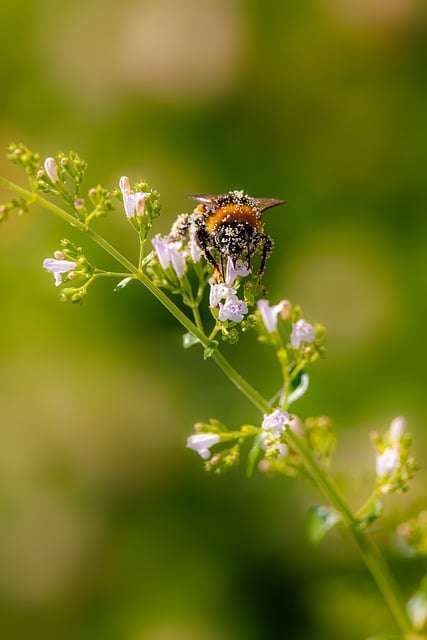
When it comes to providing the necessary nutrition for your bees, pollen patties are an excellent supplementary feed. These patties are specifically designed to offer essential nutrients to the hive, especially during times of scarcity or when their natural sources of pollen are limited.
- Ingredients and Nutritional Content:
The key to a highly effective pollen patty lies in its ingredients and nutritional content. Bees require a balanced diet that includes proteins, carbohydrates, vitamins, minerals, and essential amino acids. Therefore, it is vital to select a pollen patty that meets these requirements. Look for patties that contain high-quality ingredients such as pollen, soy flour, brewer’s yeast, and natural sweeteners like sugar or corn syrup.
Additionally, consider the nutritional content of the pollen patty. Ensure that it provides an adequate supply of proteins and amino acids as these are vital for the growth and development of your bee colony. A good pollen patty should offer a protein content of around 20-30% to ensure it can support the hive during times of pollen scarcity.
- Commercial Options vs. Homemade Alternatives:
When it comes to acquiring pollen patties for your bees, you have two main options: purchasing commercial patties or making homemade alternatives. Let’s explore the pros and cons of each:
Commercial Pollen Patties:
One advantage of using commercial pollen patties is the convenience they offer. These patties are readily available from beekeeping supply stores and are pre-formulated to meet the nutritional needs of bees. Commercial options have been extensively tested and are designed to be easily digested by the bees, ensuring maximum absorption of the nutrients.
However, it is essential to research and choose reputable brands when purchasing commercial pollen patties. Not all patties are created equal, and some may contain low-quality ingredients or additives that may not be beneficial to your bees.
Homemade Alternatives:
Creating your own pollen patties allows you to have control over the ingredients and nutritional content. This option is particularly attractive for beekeepers who prefer a more hands-on approach and want to ensure the highest quality feed for their bees. By making your own pollen patties, you can experiment with different ingredients and ratios to best suit the specific needs of your hive.
However, homemade alternatives require more time and effort. You need to research and gather the necessary ingredients, determine the right proportions, and follow specific recipes to ensure a balanced diet for your bees. If you choose this route, it is crucial to use reliable recipes from reputable sources to avoid potential nutritional deficiencies or imbalances.
Ensuring Proper Feeding Implementation
To guarantee that your bee colony has adequate food stores for winter, it is crucial to monitor their feed consumption closely. Implement the following practices to optimize their nutrition:
- Checking feed levels regularly: Keep a close eye on the feed levels within your hive. Regular inspections will enable you to assess the quantity of food available to your bees and take appropriate action if needed. By understanding the current feed levels, you can make informed feeding decisions to support their overall health.
- Signs of feed deficiency or excess: As a responsible beekeeper, it is vital to be alert to signs indicating feed deficiency or excess. By observing your colony, you can identify any indications of nutritional imbalances. Signs of feed deficiency may include reduced brood production, weakened or lethargic bees, or diminished honey stores in the hive. On the other hand, signs of excess feed may manifest as wet or fermented food, excessive moisture within the hive, or an overabundance of uncapped cells.
By paying attention to these signs and patterns, you can make adjustments in your feeding strategy to maintain optimal feed levels for your colony, ensuring their overall well-being.
Adjusting Feeding Strategies as Needed:
One of the key aspects of maintaining a successful bee colony is knowing when to adjust your feeding strategies. While bees are exceptional at regulating their own food intake, certain circumstances may require beekeepers to step in and provide supplemental nourishment. By observing your colony’s strength and foraging patterns, you can gain insights into whether additional feeding is necessary.
- Observing Colony Strength and Foraging Patterns
Regular observation of your bee colony’s strength and foraging patterns is crucial for assessing their nutritional needs. When inspecting your hive, pay attention to the number of bees present, brood patterns, and overall health. If you notice a declining population or weakened state, it may indicate a lack of available resources.
Foraging patterns also play a significant role in determining whether fall feeding is essential. Bees will actively search for nectar and pollen sources within their vicinity. If your bees are struggling to find enough food due to environmental factors such as adverse weather conditions, scarcity of floral resources, or land development, it may be necessary to intervene and provide supplementary feed.
- Consulting Local Beekeeping Resources for Guidance
Beekeeping is a community-driven activity, and as such, it is valuable to consult local beekeeping resources for guidance on fall feeding strategies. Experienced beekeepers in your area can share insights on the specific challenges and recommendations for your region. They can provide advice on when and how to adjust feeding techniques based on their own experiences and expertise.
Local beekeeping associations, clubs, or forums are excellent resources to connect with experienced beekeepers. Attend their meetings, workshops, or join online discussions to learn from others who have faced similar situations. Additionally, local extension offices and agricultural agencies often offer educational materials and expert advice on the best practices for beekeeping specific to your area.
Utilize Fall Flowers
Fall blooming flowers are a great way to supplement your bees’ diet with additional nutrients.
Planting flowers like asters, asters, mums, marigolds, and others that bloom in the late fall make great sources of honey for your bees.
Conclusion
By following the strategies outlined in this article, you can ensure that your bees are well-nourished and prepared for the winter months. Supplementing their diet with proteins and honey, planting fall blooming flowers, and establishing a feeding routine are all great strategies for boosting your bee colony’s success.
With the right approach, you can maximize your bee colony’s health and ensure that they survive the harsh winter months.
FAQs: Fall Feeding Strategies for Beekeeping
What are fall feeding strategies for beekeeping?
- Fall feeding strategies refer to the practices used to supplement honeybee colonies’ food sources during the autumn season when natural nectar and pollen become scarce. These strategies ensure the bees have sufficient nutrition to survive the winter and maintain a healthy colony.
Why is fall feeding important for bee colonies?
- Fall feeding is crucial for bee colonies as it supports their ability to store enough food reserves for the long winter months. By providing supplemental feeding, we help ensure the bees’ survival, prevent starvation, and enable them to maintain their strength until spring.
When should I start fall feeding for my bee colony?
- It is advisable to begin fall feeding when natural food sources, such as blooming flowers, start dwindling in your area. This typically occurs in late summer or early fall, depending on your region’s climate. Regular monitoring of nectar flow and pollen availability can help determine the optimal time to start feeding.
What are the recommended feed options for fall feeding?
- The recommended feed option for fall feeding is a 2:1 (sugar to water) syrup mixture. This sugar syrup closely resembles the natural nectar bees gather from flowers. Other options include high-quality pollen substitute patties or frames, which can provide additional protein to sustain the colony.
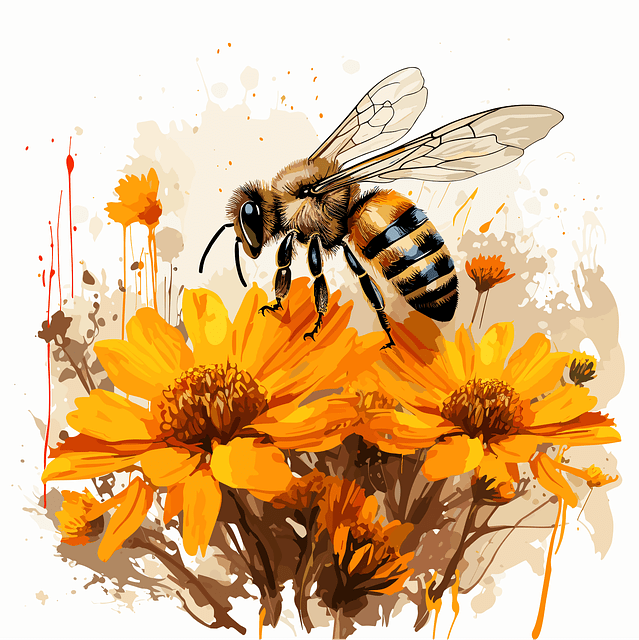
How should I administer fall feeding to my bee colony?
- Fall feeding can be administered using specialized feeders placed near the hive entrance or directly on top of the beehive. Boardman entrance feeders, frame feeders, or hive-top feeders are often used for this purpose. Ensure the feeders are clean and accessible to the bees, allowing them to feed easily.
Can fall feeding help prevent colony losses during winter?
- Yes, fall feeding significantly increases the chances of colony survival during winter. By providing an adequate food source, you are helping the colony grow stronger, which allows them to withstand the harsh conditions of winter and reduces the risk of starvation and related issues.
Are there any risks or drawbacks to fall feeding?
- While fall feeding is generally beneficial, it is important to monitor the colony’s food stores carefully. Overfeeding can lead to excess moisture in the hive, potentially causing mold or mildew issues. Additionally, improper feeding techniques or contaminated feed can introduce diseases or toxins into the colony.
Can fall feeding strategies improve honey production?
- Yes, fall feeding strategies indirectly contribute to improved honey production. By ensuring the colony has a healthy population and ample food reserves, they are more likely to flourish and gather excess nectar during favorable conditions. This surplus may result in increased honey production in subsequent seasons.
